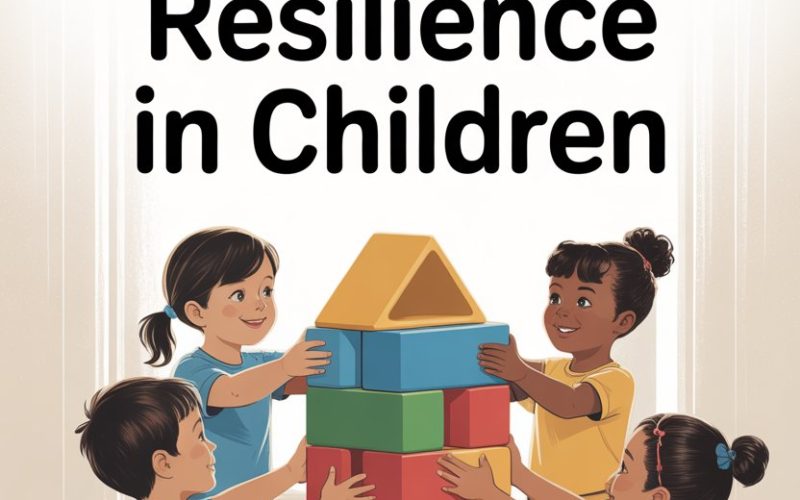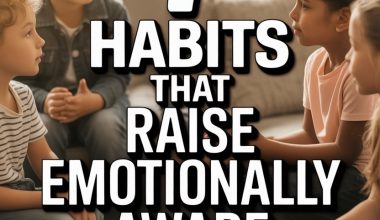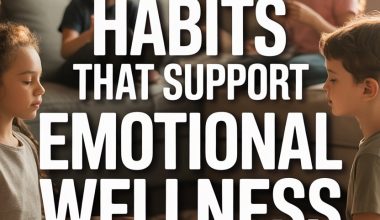Ever wished for a cheat code to help your child handle life’s bumpy bits? (No, Ctrl+Z doesn’t work on spilled milk or playground drama—if only it did.)
Emotional resilience isn’t about dodging struggles; it’s about weathering them, sometimes with a wobble, sometimes with a wobble and a biscuit.
For busy parents, building that bounce-back quality in kids can feel like another job on an already teetering to-do list.
The good news: it’s not as complicated as rewriting your WiFi password.
Here’s how emotional resilience can be gently programmed into daily family life—often in less time than it takes to convince a toddler to wear matching socks.
Everyday Grit Begins at Home
Children don’t magically develop grit the moment they’re handed a lunchbox. That stamina for life’s ups and downs starts in the thick of ordinary family moments.
It’s tempting to smooth every path, but sometimes resilience grows most from letting that path stay a bit bumpy.
When your child gets frustrated over a tricky maths problem, resist the urge to leap in with the answer. Coach them through it.
A simple, “Looks tough, doesn’t it? Want to talk it through or take a break and try again?” shows confidence in their ability to struggle and recover.
Researchers at the University of Pennsylvania have highlighted the importance of supportive encouragement over rescuing, noting that children who are gently nudged to persist tend to develop a stronger sense of agency and optimism for future challenges.
Basically, you’re giving them a toolkit for life—not just a solution for Tuesday’s spelling list.
Model Your Own Bounces
If you’ve ever stubbed your toe and muttered words that rhyme with “duck,” you know: kids are always watching.
They’re tiny, sponge-like creatures, soaking up how adults handle disappointment, stress, and those moments when the universe seems to conspire against you.
When you’re late for work and spill coffee down your shirt, narrate your feelings: “Ugh, I’m annoyed, but I’ll grab a clean top and start again.”
This teaches children that even grown-ups wobble sometimes, and that there are healthy ways to handle it. No need to stage a Shakespearean monologue—just genuine, age-appropriate honesty.
Family therapist Dr. Laura Markham encourages parents to model self-compassion and problem-solving, noting that when parents verbalise their coping strategies, it “normalises struggle and recovery” for kids.
Turns out, a little self-deprecating humour (“Well, that was a disaster, wasn’t it?”) goes a long way.
Let Kids Feel the Full Menu of Emotions
Children aren’t cupcakes—they’re not meant to be sweet all the time. Anger, sadness, jealousy, and even boredom deserve a seat at the table (preferably not the one with the fancy tablecloth).
Encourage your child to name their feelings: “You look cross. Want to tell me what’s up?” Labelling emotions helps them feel less overwhelming.
As psychologist Dr. Lisa Feldman Barrett explains, being able to identify emotions is linked to greater emotional regulation and resilience.
And when they’re in the throes of a meltdown that could rival a soap opera finale? Offer empathy, not solutions. “That sounds hard. I’m here when you want to talk.” No need to fix every sad face. Sometimes your presence is the superpower.
Problem-Solving Beats Problem-Solving for Them
There’s a certain magic in watching your child work through a dilemma, even if the solution is wonky.
When your child faces a tricky friendship issue or a playground squabble, prompt them: “What could you do next time? Is there something you want to try?”
Rather than doling out your own well-meaning advice, let kids brainstorm. Brain development expert Dr. Dan Siegel points to “collaborative problem-solving” as a key way for children to build both independence and resilience.
It might take longer (and involve more wild ideas than a creative writing contest), but those moments are their “aha!” training ground.
Routine = Safe Zone
A predictable routine acts as a safety net when life gets topsy-turvy. Knowing what’s coming next—bath, story, bed—gives children a sense of control.
Even when the rest of the day resembles a three-ring circus, those little rituals can be an anchor.
This doesn’t mean your home has to run with military precision (unless you genuinely enjoy synchronised tooth brushing).
Small routines, repeated consistently, are enough to reassure a child that the world, while sometimes wild, is largely safe and predictable.
Developmental psychologist Dr. Kenneth Ginsburg describes “the comfort of routine” as a core support for young people, especially in times of stress or upheaval.
Build Connections—Big and Small
Children who feel connected—to parents, teachers, neighbours, or even the postie—are more likely to take emotional risks and recover when things go pear-shaped. Connection gives them a safety net for their feelings.
Simple things count: a secret handshake, a five-minute bedtime chat, a shared giggle over the world’s worst knock-knock joke.
These micro-moments of connection reinforce a child’s sense of belonging and make it easier for them to reach out when they need help.
Child psychologist Dr. Tina Payne Bryson highlights that “safe, stable connections are the number one buffer against stress in childhood.”
Even if your calendar looks like a game of Tetris, those mini check-ins matter.
Praise Effort, Not Perfection
It’s tempting to throw a parade every time your child wins—or at least brings home a certificate with a shiny sticker. But kids grow more resilient when praised for their effort, strategies, and persistence rather than just results.
Try swapping, “You’re so clever!” for “I noticed how hard you worked on that drawing.” This helps children link success with effort, not some mysterious inborn talent.
Expert Carol Dweck’s work on growth mindset has shown that this kind of praise boosts resilience and a willingness to tackle harder challenges.
And for those days when the results look like they were created by a sleep-deprived squirrel? Acknowledge the trying, not just the triumph.
Teach Optimism—Without the Rose-Coloured Specs
Glass half full, but with a reality check. Teaching optimism doesn’t mean pretending everything’s fabulous when it isn’t (your teenager will see through that quicker than you can say “TikTok”).
It means helping children notice positives and possibilities even when things go sideways.
When plans fall through, encourage a bit of perspective: “It’s rubbish we missed the football match, but maybe we can watch highlights and have our own kickabout.”
Dr. Martin Seligman’s research on learned optimism shows that children who develop realistic optimism are less likely to spiral into anxiety or give up at the first hurdle.
It isn’t about forced cheerfulness. It’s about planting seeds of hope and flexibility.
Allow for Age-Appropriate Risk
No, this isn’t a call to let your toddler juggle knives or your teenager host a rave.
But a little bit of managed risk—climbing that slightly-too-high tree, trying out for the school play, cycling a bit further than last week—helps children learn where their boundaries are and how to recover if things don’t pan out.
When they stumble (sometimes literally), resist the urge to swoop in like a superhero. Instead: “That looked tricky—what worked, what didn’t?”
This encourages kids to reflect, recalibrate, and, crucially, try again.
A longitudinal study from the University of Oslo echoes this, finding that children allowed to face appropriate risks develop stronger coping skills and are less likely to be overwhelmed by future challenges.
Tame the Tech Monster—Together
Screens are here to stay, and some days they feel more like a necessary evil than a helpful tool. While endless scrolling won’t teach resilience, digital downtime is a battle few parents win without a little creativity.
Set limits as a team, not as a decree. When kids help decide how and when screens are used, they’re more likely to stick with the plan. And if they melt down when the iPad disappears?
That’s a chance to practise coping with disappointment—preferably without anyone hurling devices into next week.
Try swapping a bit of screen time for family board games, outdoor adventures, or just a kitchen disco. These moments of boredom and togetherness help children discover that resilience isn’t just an app—it’s a muscle, built bit by bit.
Sleep, Snacks, and Sanity
Never underestimate the power of a solid night’s sleep and a jam sandwich. Tired, hungry kids are much less likely to display resilience—mostly because their bodies are too busy staging a mutiny.
Prioritise rest, regular meals, and a bit of downtime. Life is far less overwhelming when everyone’s basic needs are met (including yours).
Research from the Sleep Foundation underscores that children with regular sleep routines are better equipped to manage stress and recover from setbacks. Sometimes, resilience starts with a nap. Or a biscuit. Or both.
Progress, Not Perfection
Every child’s path to emotional resilience looks a bit different—some take the scenic route, others opt for the shortcut through the muddy puddle.
There will be setbacks. There will be triumphs involving nothing more than finding that missing sock.
Busy parents, you’re already programming resilience with every ordinary, messy, loving moment you share.
There’s no secret code—just small, repeated steps. And possibly the odd snack-based bribe.
Raising Bouncier Kids, One Day at a Time
If resilience could be installed like an app, life would be easier (and possibly more lucrative).
But the truth is, it’s stitched into the everyday fabric of family life—through wobbles, giggles, tears, and triumphs, big and small.
You’re helping your child find their feet, even when you rarely have both of yours in the same place at once.
Keep showing up. Keep cheering them on.
And keep a biscuit to hand—you never know when you’ll need it.





